The most recent ABS demographic statistics for the December quarter of 2016 revealed rampant population growth for both Victoria (read Melbourne) and New South Wales (read Sydney):
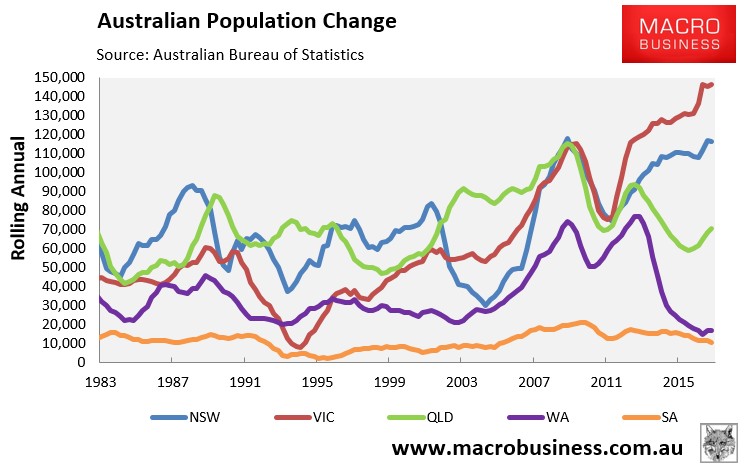
In the 2016 calendar year, Victoria’s population surged by an insane 147,000, whereas New South Wales’ population grew by 116,000. Whereas in the decade to 2016, Victoria’s population grew by a whopping 1,140,000 (22%), whereas New South Wales’ population grew by 1,012,000 (15%).
Not surprisingly, this explosion in immigration-fueled population has driven a huge rise in traffic congestion. From The Australian:
The number of vehicles travelling in Australian cities has grown almost tenfold in the past 70 years and, with exponential population growth not being met with adequate road infrastructure upgrades, traffic speeds are crawling to a standstill…
Last year, a report from the Committee for Economic Development of Australia said congestion could cost the nation more than $50 billion in lost productivity by 2031 unless addressed.
The latest congestion bill was $16.5bn in 2015.
Congestion levels on major arterial roads are at a high, with most cities suffering much slower travel times and lower average speeds than previously recorded.
Sydney, which last year was named the nation’s most congested city by peak transport body Austroads, has seen significant reductions in average speeds even since 2011. The population of Greater Sydney has risen by almost 300,000 people during that time, reaching almost five million…
Sydney is also home to seven of the nation’s most delayed roads and drivers need to account for 50 per cent additional travel time during peak hours to arrive at their destination on time…
Sydney and Melbourne have similar congestion patterns due to similar population levels and number of vehicles on the roads…
Melbourne is growing by 2000 new drivers each week, with more than 200,000 vehicles travelling across the West Gate Bridge between the CBD and western suburbs each day. According to the most recent data available, about 1,164,000 Melburnians drive to work each day (with an additional 83,000 people travelling to work as passengers).
Between 2006 and 2013, speeds on Melbourne’s major arterial roads have slowed by an average of 13km/h…
Last year, Infrastructure Partnerships Australia (IPA) released a report that used Uber driver information to measure “road network performance” in Sydney, Melbourne, Brisbane and Perth to drill down into average travel times at different hours of the day.
The results are based on the following number of drivers in each city:

And found that “efficiency” pretty much followed the level of population growth as shown in the chart above:
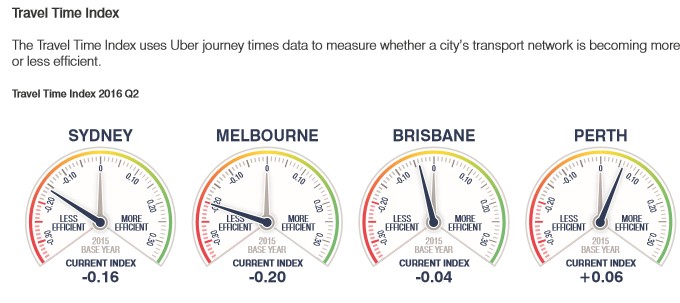
In Melbourne, which is the population ponzi king, travel times worsened materially, followed by Sydney, which has also experienced strong population growth.
The IPA’s findings support those of the Bureau of Infrastructure and Regional Economics, which forecast soaring costs of congestion, particularly in Sydney and Melbourne, over the next 15 years based on lower population projections than exist now (hence congestion costs have likely been underestimated):
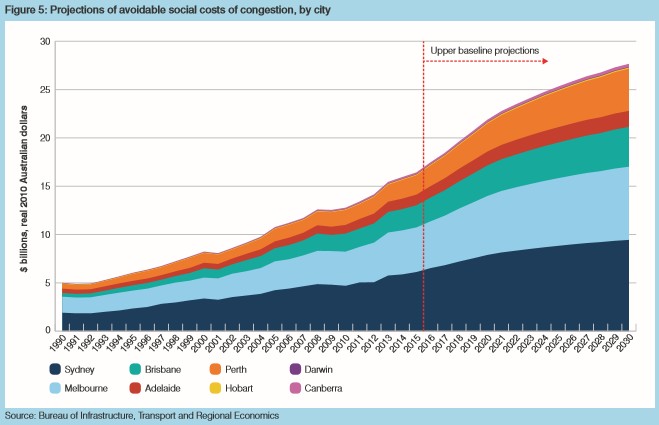
The sad reality is that with a mass immigration ‘Big Australia’ policy in effect:
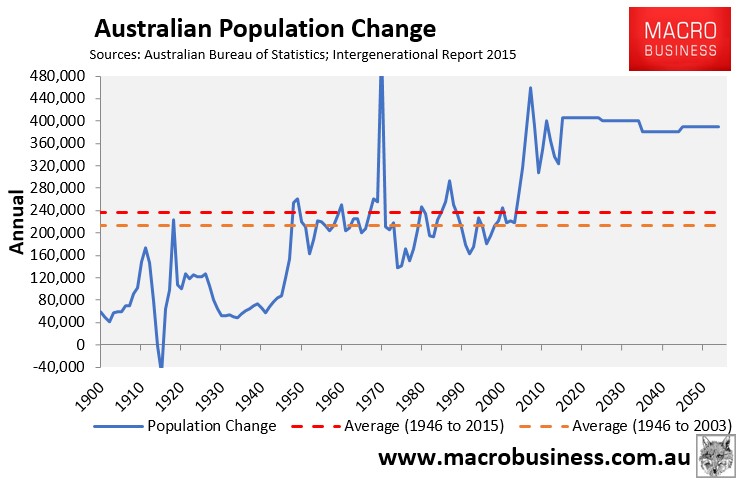
And population growth projected to remain turbo-charged in both Melbourne and Sydney:
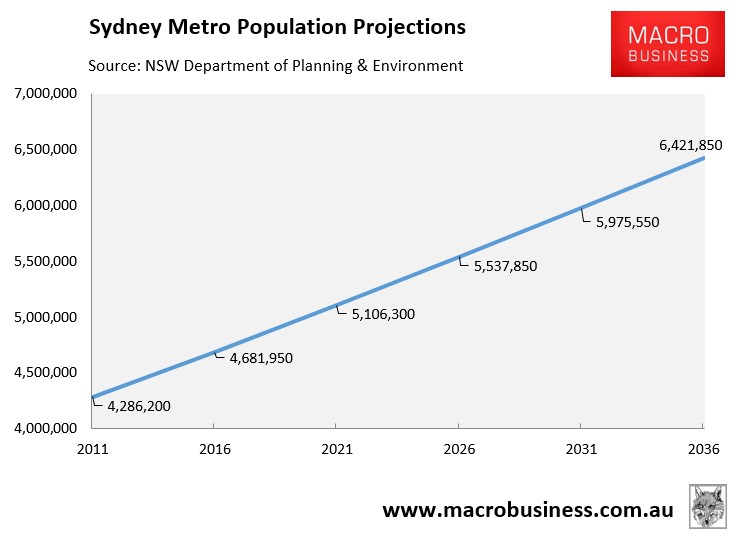
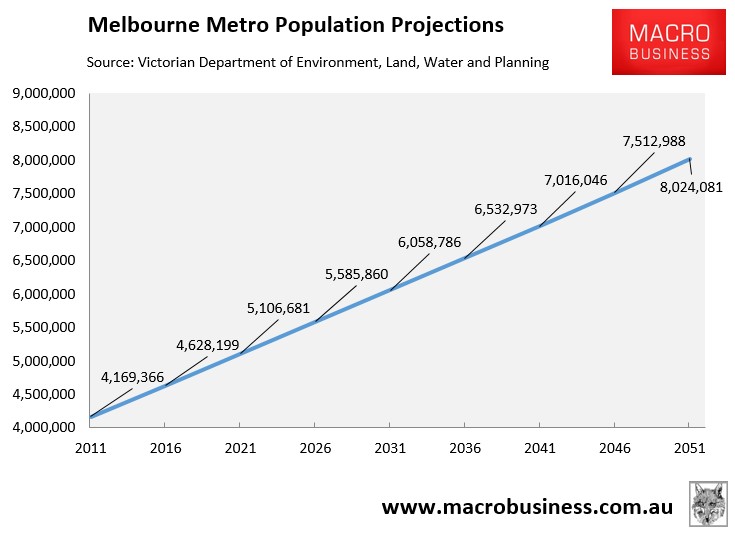
Traffic congestion will get so much worse, along with its deleterious impacts on productivity and living standards.

